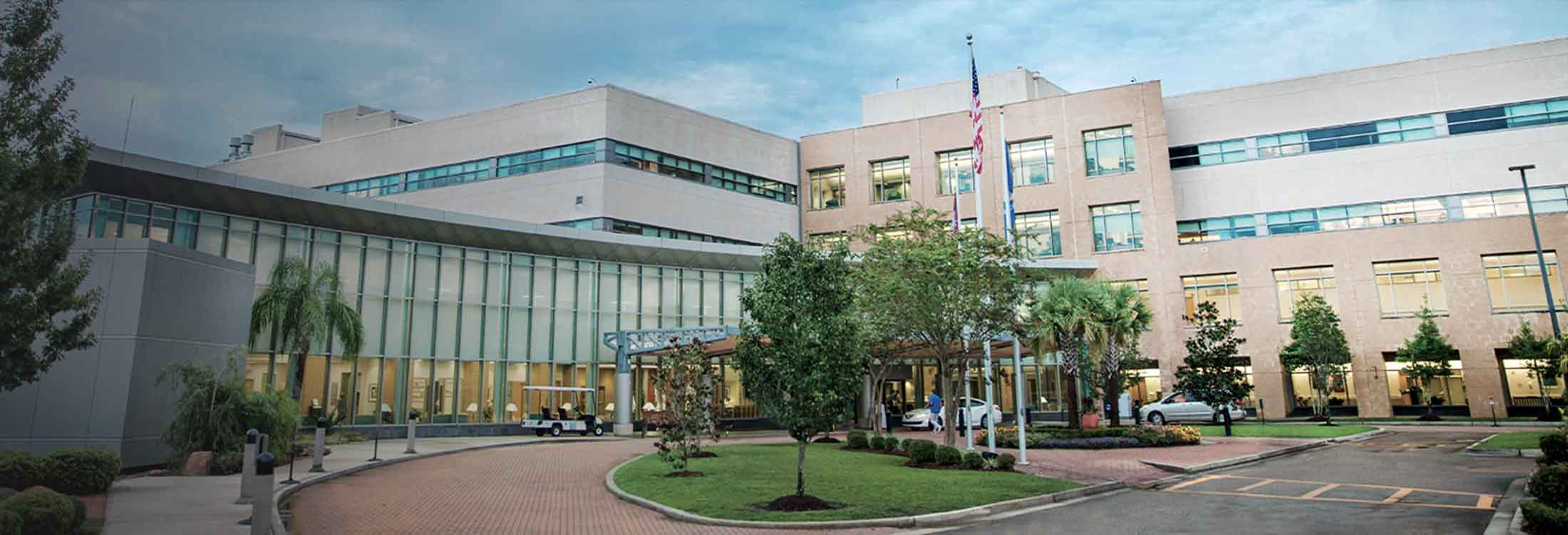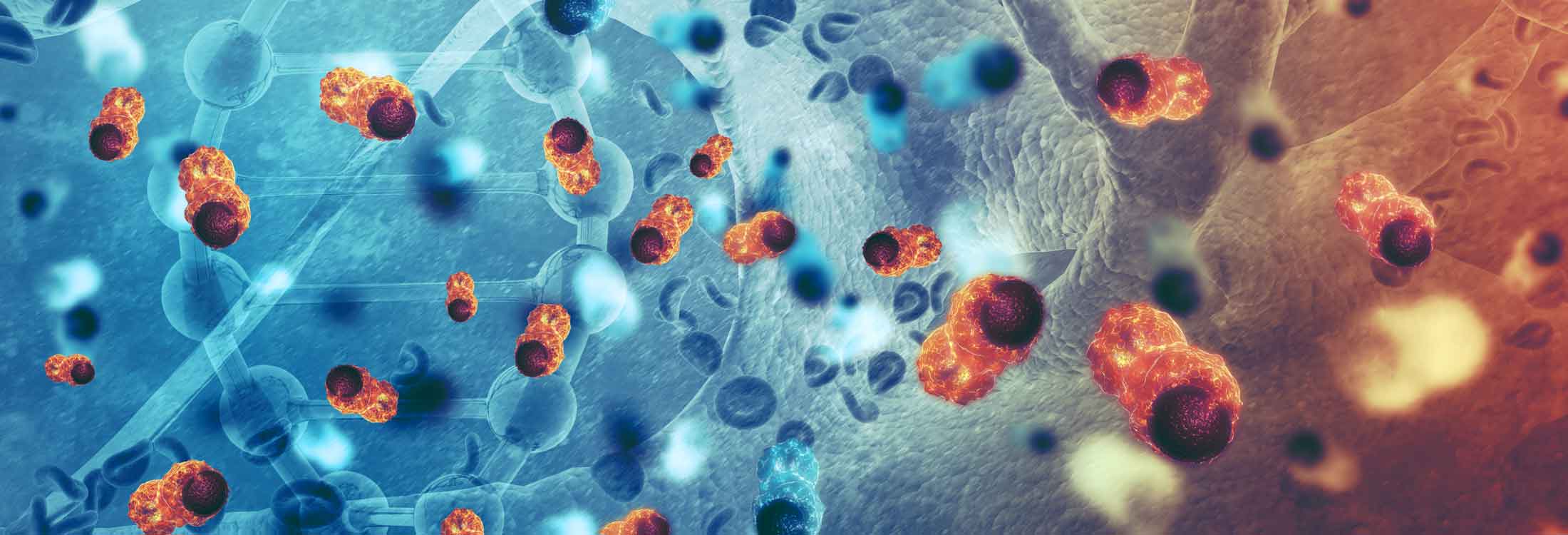Going Beyond the Tumor Board Experience

BACKGROUND
The St. Tammany Cancer Center opened its doors in 2012, consolidating for our community radiation and medical oncology services, diagnostic imaging, infusion and lab all in one location. Since that time, we have implemented:
- Two physician driven multidisciplinary teams designed to improve the care of patients with breast and lung cancers.
- Endobronchial ultrasound (EBUS) and Endoscopic ultrasound (EUS), making us a regional destination for these procedures.
- Addition of a monthly multidisciplinary GI conference in mid-2016.
- NAPBC accreditation in 2017 with resulting biweekly multidisciplinary breast conferences.
Our hospital has seen tremendous growth in our cancer program with a 30% growth in new cancer cases between 2012 and 2017. With continued American College of Surgeons Commission on Cancer (CoC) accreditation, we found ourselves with five conferences being held on a monthly basis. As with many hospitals, we also found ourselves with Registry staff being moved offsite to allow for expansion of services critical to patient care within the hospital itself. With the growth of our Registry volume and the addition of conferences, we found our registry staff being stretched to limits not seen before.
PROCESS
We estimated that it was taking close to 10 hours per conference to ensure conferences were a success. Many of the steps were repetitive to ensure that appropriate pathology and imaging was available for review and that the documentation requirements needed for both CoC and NAPBC accreditation were met. Much of that documentation was manual and a duplication of efforts:
- Cases were emailed to the conference coordinator by the physicians presenting.
- Folders with each case, the pathology reports, and documentation of images needed for cases had to be brought to the hospital’s Pathology and Radiology Departments; additional cases added on required additional trips to bring documentation to Pathology and Radiology at the main campus.
- Case documentation as well as items discussed and attendance were documented at the conference and again after the conference to enable required documentation for accreditation purposes to be on a spreadsheet for each conference after the conference was completed.
Our facility has had numerous conversations over the years about including conference documentation in the EMR. Physicians and our legal departments had concerns regarding this procedure as the documentation is discoverable. We have a number of facilities participating in conferences, many of them with separate EMR systems so the conference discussions would not be part of all EMR programs. We meet at the most, every other week so this concerned our medical staff. One diagnostic exam can change the course of treatment for a patient; no one wanted to have documentation of treatment planning in the record and not have timely follow-up as to why treatment changes might have occurred, whether stage or patient driven.We were fortunate to meet Dr. Lijo Simpson, Medical Oncology, at a cancer conference in 2017 and got a chance to learn about the program he and his team had developed to manage conferences. As a member of the Cancer Committee at various facilities, he saw the amount of time it was taking Registry staff to complete just one conference and his experience was similar to mine. In late 2017, we had the developers of OncoLens do a webinar for our Registry staff and ended up having a second webinar to include our Cancer Program Administrator.
OncoLens is a web and phone based HIPAA compliant platform that facilitates quality care treatment planning at cancer programs through improved workflows, clinical decision support and customizable reporting. What impressed us all is how comprehensive the software is.
- Physicians or their staff can enter their own cases putting in the required minimal documentation, but also having the ability to ask Pathology or Radiology a specific question they want to review at the conference. The platform is also capable of integrating into EMRs.
- Departments such as Pathology or Radiology as well as the Registry staff and our clinical trials nurse, are notified when a case is added; this can be modified to receive information weekly or as needed, but our staff has enjoyed the notification whenever a case is added.
“What impressed us all is how comprehensive the software is.”
- Pathology and Radiology can add pictures to the actual case presentation so when the application is started, the patient history is present as well as the pdf of the path report, the pathology images, and radiology images. We have not progressed to uploading Radiology images at this point at the radiologists preference, but that has not presented an issue.
- Clinical trial information within a 50 mile radius shows up if the patient seems to meet criteria for study entry; this keeps clinical trials on the forefront of physicians’ minds when treatment planning. As we strive for commendation levels for clinical trial accrual each year, this was a huge aspect in our Cancer Program Administrator’s eyes.
- You can email securely members of the care team and coordinate follow up care directly from the platform.
- Documentation needed for conferences occurs real time, attendance, items discussed (such as NCCN guidelines, stage, genetics, was the case prospective) can all be done at the conference, not the day after.
- The platform is HIPAA compliant and PHI is visible only to the members of the care team and completely de-identified during the tumor board presentation.
- Discussions can be documented regarding the case, questions, treatment decisions.
- The templates are customizable to include any relevant quality metrics at the cancer program that you wish to bring up during tumor board for ongoing provider education or reminders.
- Reports can be run on anything you need, attendance, number of cases discussed, what aspects were discussed, number of conferences, number of prospective discussions.
IMPLEMENTATION
Once we decided to move forward with implementation, the company was wonderful in providing a timeline. This included:
- Administrator training – Registry staff and personnel like me who need to run reports and document at the conference.
- Provision of a list of all physicians and allied health who needed access to not only load cases, but to be able to review cases and add input. We made sure to include staff at the physician offices who we knew added cases for physicians.
- Provision of all the conference dates of the year that the OncoLens staff loaded so when posting a case, the physician has access to the dates of the conference he/she wants to do their presentation.
- All with OncoLens access were provided with a welcome email including their login credentials they could then change; included was a short video on how to post a case.
- Pathology and Radiology received their own emails with a short video on how to upload images.
- We defined an implementation date. At conferences prior to the implementation date, we discussed OncoLens and even had Dr. Simpson and the President of OncoLens do a short 10 minute presentation on the program, advantages and how to load cases/upload images at several of our conferences.
- We went live!
We implemented OncoLens mid-April exclusively as our conference platform for case requests and presentation and documentation of required elements from our June 13, 2018 conference on and the results have been amazing.
“95% of our physicians use their Smart Phones to upload their own cases or have their staff post cases.”
- Ninety five percent of our physicians use their Smart Phones to upload their own cases or have their staff post cases. The application is on their phone so they can see a patient and enter the information. Imagine you are a physician having just completed an EUS procedure and knowing you have a new pancreatic case, taking out your phone and uploading the case while fresh on your mind. That is the experience we are seeing.
- The agenda is created automatically in OncoLens using the information entered by physicians and/or Registry staff who often supplement patient history as they are researching the case.
- I have been able to run reports to monitor physician attendance by specialty, to look at our conference presentation volume over past years (it has increased), and other measures. Come December, I will be able to run a report to provide to our CoC and NAPBC meetings on the required elements of conference presentations.
- If a member of the care team is not present we can email them the recommendations (with only the patient initials visible) from the platform – e.g. the patient needs a PET scan before starting treatment or a liver biopsy may be indicated to validate the presence of a suspicious lesion in the liver. One of my favorite stories is having a surgeon present a breast cancer case where the patient was having difficulty with copays for all their appointments and he need the social worker/patient financial counselor to intervene. I was able to document the conversation in OncoLens and email it to our social worker at the cancer center who was able to follow-up with the patient the next day to work with her on resolving her financial concerns.
- Pathologists love to use their phones to take pictures needed for case presentations.
- Clinical trials and genetics are spoken of more often as is clinical staging.
- Most of all, the time taken for a single conference has decreased to around 1 hour from the original 10 hours pre-and post-conference allowing my Registry staff personnel to perform more vital Registry functions. Much of this one hour is not in OncoLens, but in initiating abstracts for the cases to be presented.
“We noted an uptick in the number of cases being placed on the conference schedules which we honestly attribute to the use of OncoLens.”
The support, initial and ongoing, we have received from the company has made this experience even more delightful. Questions are answered expediently, whether it is from hospital staff or physicians.
Recently, we noted an uptick in the number of cases being placed on the conference schedules which we honestly attribute to the use of OncoLens. We requested that whomever was posting the case be able to have a place to document whether the case was high, medium or low priority (versus utilizing the urgent or not urgent flag on the system), something our physicians have been used to submitting. That consideration is in development by the company at this time.
St. Tammany Parish Hospital’s commitment to deliver worldclass healthcare close to home and our partnerships with Mary Bird Perkins Cancer Center and Ochsner Health System combine to elevate the level of care available in St. Tammany Cancer Center. St. Tammany Parish Hospital hosting these two trusted providers continues the center’s commitment for world-class cancer care close to home.
Services available through St. Tammany Cancer Center include radiation therapy, chemotherapy, PET CT imaging, clinical research trials, nurse navigation patient support services, community screenings and education. The center’s multidisciplinary approach includes surgeons, medical oncologists, radiation oncologists, pathologists, radiologists and other specialists building upon the center’s proven highly personalized approach to patient care.
Since 1998, St. Tammany Parish Hospital has collaborated with MBPCC to deliver the full range of cancer treatment options for patients on the Northshore. Now, with nationally recognized Ochsner Health System, the most trusted names in cancer care are delivering integrated cancer services in one convenient location, connected via skybridge to the hospital’s main campus.
St. Tammany Parish Hospital is accredited by the American College of Surgeons Commission on Cancer as a Comprehensive Community Cancer Center and the National Accreditation Program for Breast Centers (NAPBC).


